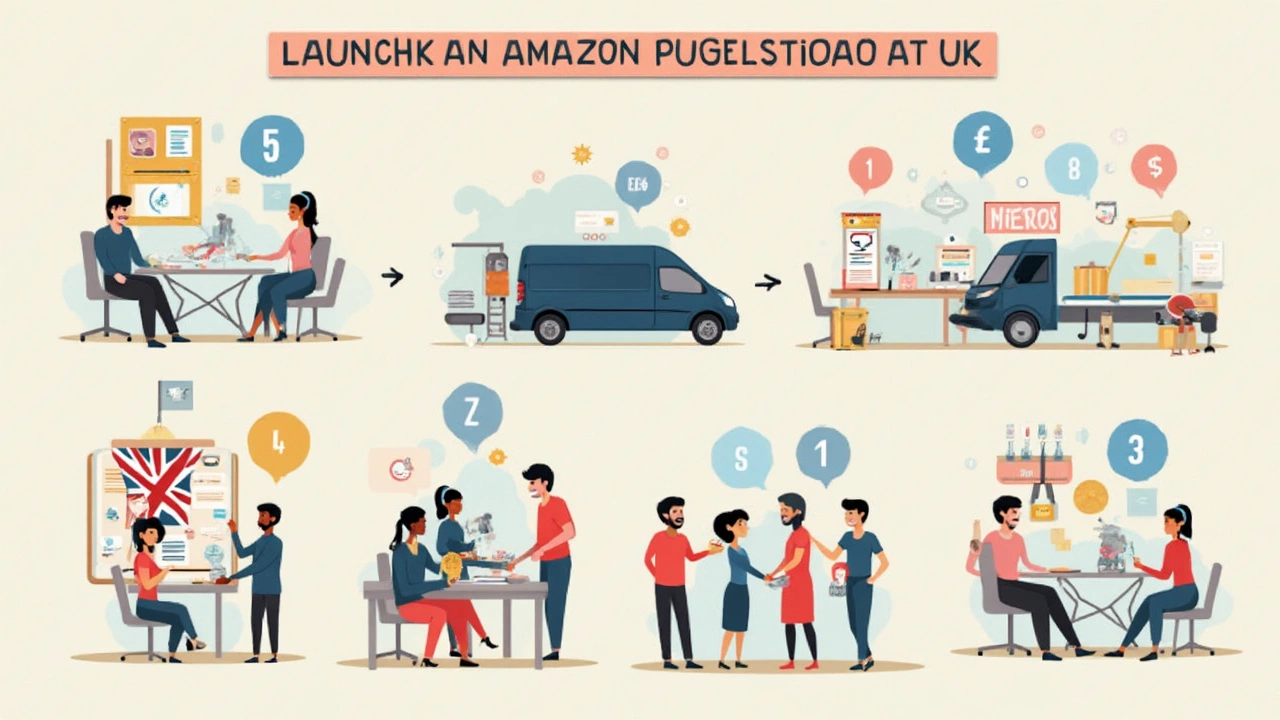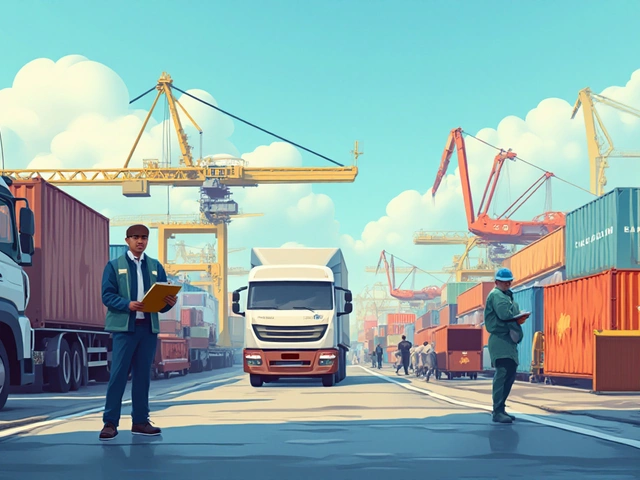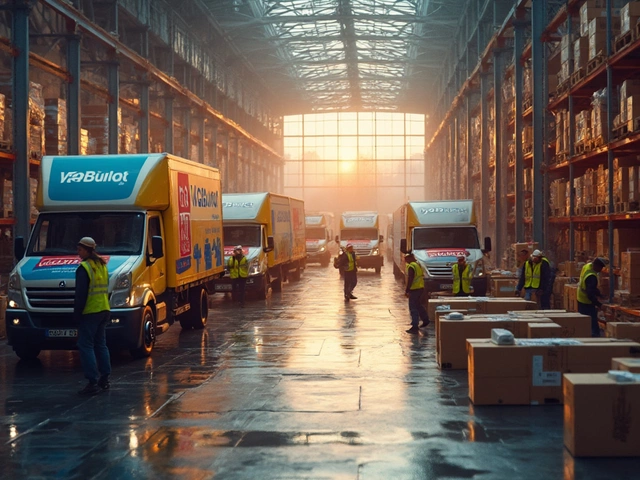If you’ve looked into making money with Amazon, that logistics program probably caught your eye. People talk about big earnings, but no one really tells you what it costs to get rolling. Spoiler: it’s not as cheap as some YouTube ads make it sound.
To start your own Amazon logistics business as a Delivery Service Partner (that’s DSP for short), they want you to have at least $30,000 in liquid cash. And that’s just the first hurdle. Amazon spells it out on their site: you need enough to cover things like van leases, payroll, insurance, and those lovely startup fees. That $30K number is pretty locked-in for 2025, but actual startup costs can run higher, sometimes hitting $35,000 or more, especially in bigger cities.
Some folks try to cut corners with used office supplies or by trimming hiring costs, but Amazon requires you to follow their playbook. They want clean vans with their branding, a certain number of drivers ready to go, uniforms, the right tech set-up—you can’t just show up in a minivan and a hoodie.
- What Is Amazon Logistics, Anyway?
- Breaking Down the Real Startup Costs
- Hidden Expenses People Forget
- Budget-Smart Tips to Start Strong
- Is It Worth It? The Real Life Numbers
What Is Amazon Logistics, Anyway?
Amazon Logistics is the part of Amazon that handles package delivery from their local warehouses—called fulfillment centers—straight to your doorstep. It isn’t the same thing as FedEx or UPS. Instead, Amazon partners with regular people (yep, just like you) and small businesses, letting them run their own local delivery services, officially called Delivery Service Partners or DSPs.
Amazon launched this program in 2018 to meet the crazy fast shipping promises customers now expect. The company wanted more control over the delivery process without buying up every van in the country. As of early 2025, Amazon Logistics delivers around 10 million packages per day in the US. That’s even more than FedEx handles on average!
Here’s what you get as a DSP:
- Access to Amazon’s daily delivery routes and technology (they load your phone up with the orders and addresses for the day)
- Support with things like van leasing, insurance, and uniforms
- Set rules for how many drivers and vehicles you need to start (usually 5–20 vans plus drivers from day one)
This isn’t a gig job like driving for Amazon Flex. It’s your own small business. You hire your team, manage the vans, and run operations your way—but there’s a rulebook, and Amazon checks in a lot. And here’s the thing: Amazon logistics has grown so big that, according to recent numbers, it now makes up more than 70% of Amazon package deliveries in the US, leaving the old-school shippers to pick up the scraps.
Here’s a quick look at the main differences between the big players in the table below:
| Company | Handles Amazon Packages? | Own Fleet? | Third-Party Partners? |
|---|---|---|---|
| Amazon Logistics | Yes (70%+) | Some company-owned, mostly partners | Yes (DSPs) |
| FedEx/UPS/USPS | Yes (about 30%) | All company-owned | No |
This shift changed how e-commerce logistics works—instead of a few national giants, it’s now a wide network of local businesses delivering for Amazon under their brand. If you want in, you’ll need to follow Amazon’s playbook, but the opportunity to grow your own business is real.
Breaking Down the Real Startup Costs
So, how much does it actually take to get your Amazon logistics (DSP) business going? The numbers are more real than rumors online. Here’s what most folks sink money into before their first package hits the van:
- Amazon logistics startup fee: $10,000. This is the fixed entry fee you pay straight to Amazon. It's non-negotiable and covers their support, training, and tech access.
- Van leasing (first month deposit plus first month): Depending on your city and vehicle choice, $3,500 to $5,000 per van. Amazon expects new DSPs to start with 5 vans. So, you're looking at a $20,000 to $25,000 upfront hit just for vehicles.
- Insurance (liability, cargo, auto): Roughly $6,000 to $8,000 to get protected before day one. Insurance providers will want payment before you're assigned any routes.
- Legal, permits, licensing: Set aside at least $1,000 for paperwork, business entity registration, and possible local permits.
- Recruiting and training your drivers: Budget $1,000 minimum for job postings and screening alone. Training costs can add another $1,000 to $2,000, easy.
- Uniforms, mobile devices, and scanners: Around $300 per driver for basic gear, which adds up fast if you start with a crew of 10 or more.
Here’s a quick look at how these costs can add up at launch:
| Expense | Estimated Cost (USD) |
|---|---|
| Amazon DSP Fee | $10,000 |
| Van Leasing (5 vans) | $20,000–$25,000 |
| Insurance | $6,000–$8,000 |
| Legal & Permits | $1,000 |
| Driver Recruiting/Training | $2,000–$3,000 |
| Uniforms & Tech Equipment | $3,000 |
| Total Estimated Cost | $42,000–$50,000 |
An industry advisor interviewed by Business Insider put it like this:
"People see the $10,000 entry fee, but don’t realize your cash burn before your first delivery is way higher. If you don’t have at least $30,000 liquid—and really more like $40,000—you’re setting yourself up to struggle in the first quarter."
Plan for some wiggle room on top, since setup headaches or hiring delays are pretty much standard. Better to overestimate your starting cash than get caught short halfway through signing contracts.

Hidden Expenses People Forget
It’s easy to get laser-focused on the startup fee and van lease, but honestly, that’s just the tip of the iceberg. A lot of new owners are surprised by all the little (and not-so-little) costs that sneak up.
First off, your biggest unseen cost is going to be insurance. Amazon requires some serious commercial insurance packages—not just regular car insurance. By 2025, monthly insurance premiums for a 20-van fleet can hit $7,500 or more, depending on location and accident rates. And if you have any claims? Those deductibles can sting.
Then there’s payroll. Amazon expects you to pay your drivers competitive wages. In most urban areas, that means $19–$22 per hour, plus overtime and payroll taxes. If you skimp on this, your drivers will just jump to the next gig. Plus, Amazon audits this stuff, so there’s no under-the-table shortcut.
Uniforms, drug testing, background checks, and onboard training also add up. You’ll need to buy at least one uniform set per driver. Background checks typically cost $30–$50 per person, and you can’t skip them. Amazon’s onboarding process itself is unpaid, so you cover training wages out-of-pocket.
Let’s not ignore the tech side. The tablets or smartphones your team uses for scanning, routing, and communication? You buy those, and you’re on the hook if they’re lost or damaged. It’s normal to spend $300–$600 up front for every device, plus monthly data plans.
- Commercial vehicle signage and decals
- Physical facility costs (even for a small office or locker room)
- Legal fees for registering your business and handling contracts
- Fuel fluctuations (Amazon’s fuel card doesn’t always beat local pump prices)
Here’s a look at some typical hidden expenses you’ll probably see in your first quarter:
| Expense | Average Cost (USD, Q1 2025) |
|---|---|
| Commercial Insurance (monthly) | $7,500 |
| Uniforms (per driver) | $60 |
| Background Checks (per person) | $40 |
| Device Purchase (each) | $400 |
| Office Lease (monthly) | $950 |
| Legal/Setup Fees (one time) | $1,200 |
| Payroll Taxes (approx. %) | 12% |
Remember, if you want to stick around in Amazon logistics, you’ve got to plan for these surprise costs. They eat up margins fast, and every legit DSP operator I know wishes they’d built a bigger buffer for the first six months.
Budget-Smart Tips to Start Strong
No one wants surprise bills their first week running an Amazon logistics operation. If you want to stretch every dollar, focus on what actually moves the needle—no random spending just to look busy.
- Amazon logistics partners get clear guidance from Amazon, but there’s still room for smart budgeting. Shop around for commercial van leases. Prices can swing $100-300 a month between providers, and every chunk saved here helps.
- Leverage Amazon's approved vendor list for uniforms and supplies—they've screened vendors for price and dependability. Going rogue can actually cost you more through fines or reorders.
- Bulk hire drivers during off-peak months. You’ll find more candidates and often negotiate lower hourly rates than in a holiday rush. Use job fairs or refer-a-friend bonuses instead of pricey recruiters. A bonus as small as $250 can fill your team faster than a thousand bucks in ads.
- Negotiate insurance rates. Take safety training seriously—the fewer claims, the less you’ll pay. Amazon even tracks DSP safety scores, so playing it safe literally pays in the long run.
- Count every monthly expense, not just one-time fees. Many new DSPs forget stuff like background checks ($40-70 per driver), fuel card fees, and app subscriptions for route optimization.
Here’s what the first three months of must-have expenses often look like for a startup DSP in 2025:
| Expense | Typical 3-Month Total (USD) |
|---|---|
| Van Leases (5 vehicles) | $6,000 - $9,000 |
| Insurance | $4,500 - $6,000 |
| Payroll (6-10 drivers) | $22,000 - $38,000 |
| Uniforms & Gear | $1,500 - $2,000 |
| Onboarding Fees & Admin | $1,000 - $2,000 |
| Gas & Maintenance | $3,000 - $5,500 |
Keep a rainy day fund. Unexpected things happen: vans break down, drivers quit, or compliance costs spike. Most DSPs who last more than a year say having at least $10,000 extra set aside kept them out of a pinch. If you’re not budgeting for the what-ifs, you’re risking way more than just your profit.

Is It Worth It? The Real Life Numbers
Before you empty your savings, you’ll want to crunch the numbers. Otherwise, you might end up feeling frustrated if the payback is slower than expected. Amazon says their Delivery Service Partners usually make between $75,000 and $300,000 a year in profit. That sounds like a big range, right? It really depends on your location, driver performance, and—let’s be real—how many headaches you’re ready to deal with. Most owners in busy cities do better, not just because there’s more volume, but because dense routes mean less fuel and time spent on the road.
Here’s a quick look at what real DSP owners typically see when it comes to revenue, expenses, and profit. Keep in mind, the numbers are for 2025 and assume you’re sticking to Amazon’s DSP playbook:
| Item | Low Estimate (USD, yearly) | High Estimate (USD, yearly) |
|---|---|---|
| Gross Revenue | $1,000,000 | $2,500,000 |
| Operating Expenses | $900,000 | $2,200,000 |
| Owner Profit | $75,000 | $300,000 |
What eats your profits? Payroll usually takes up the largest chunk—think about paying 20-40 drivers plus benefits. Next is vehicle costs: leases, fuel, repairs, and insurance. If you don’t keep a close eye on those, they’ll eat you alive. Compliance and unexpected stuff (like a van getting totaled or a random lawsuit) can really mess with your margins too.
- Tip: Owners who survive past the first year usually stay on top of their numbers, invest in good drivers, and keep their vans well-maintained.
- You’ll have to hit Amazon’s delivery targets every week. If your team lags, your contract may be at risk. Getting ahead with training makes a big difference.
- Don’t ignore paperwork. Lots of DSPs get fines or deductions because someone missed a step or filed a late form.
The Amazon logistics model works best for people who want to go all-in and treat this as their full-time gig. Passive income? Forget it. Expect 40-60 hour work weeks until you’re cruising. It’s not for everyone, but if you’re business-minded, organized, and good with people, there’s real money to be made.





